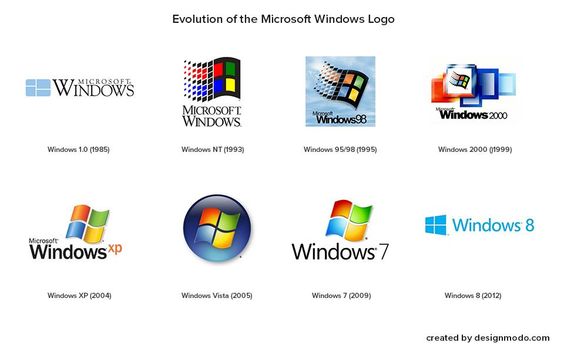
The Windows logo has undergone many changes over the years, including several redesigns and tweaks. We’ve been watching them all in this brief overview of the history of Microsoft’s flagship product.
Windows 1.0 (1985)
Windows 1.0 was released in 1985, and the Windows logo was a window with a pane of glass. It was designed by Susan Kare, who also created many other iconic elements of early Microsoft products and services (including icons like the recycle bin). The original name for this product was “Interface Manager,” but it was later renamed Windows 1.0 after Steve Jobs threatened to sue Microsoft for stealing his idea for using windows on an operating system.
Windows NT 3.1 (1994)
Windows NT was the first version of Windows to support 32-bit applications, and it was also the first version of Microsoft’s operating system that wasn’t based on DOS. It was released in 1993 as a response to IBM’s OS/2 operating system, which had been out since 1987. Windows NT 3.1 was the first release of their new product line; it provided improved networking capabilities and support for up to 16GB RAM (compared with 1MB for DOS).
Windows 95/98 (1995)
Windows 95/98 was the first major redesign of Microsoft’s logo. It was designed by Microsoft’s in-house design team and is still used today as part of its branding. The design features a blue and green window that looks like it’s made from glass, with two panes separated by an orange line. The window has some text underneath it that says “Microsoft Windows,” which appears in blue letters on a white background inside the bottom pane of glass (or flower petals). There are also two lines above this text–one green, one red–that represent rays of light shining through said window or flowers/petals; they run along both sides of the box containing all these elements together into infinity (or until they hit another surface).
Longhorn (2004)
The Longhorn logo was designed by Microsoft’s lead designer in 2004. It was to be used in their new operating system, Windows Vista. The logo combines the older Windows logo and the flag of the United States. This was done because Microsoft wanted to show how their products were part of American culture and heritage.
Windows Vista (2005)
Windows Vista was a major release of Microsoft’s Windows operating system, released on 30 January 2007 and was available in six different editions. It was the first version of Windows to be built on the Windows NT kernel instead of its predecessor’s MS-DOS/Windows 9x architecture. Windows Vista had some significant changes from its predecessor, most notably its new visual appearance that allowed for greater graphic quality when displaying images and videos. The updated interface also included several new features such as Aero Glass which provided a translucent 3D effect when viewing your desktop through windows or when using Sidebar gadgets while browsing websites online (this feature is not available anymore).
Windows 7 (2009)
Windows 7 was released in 2009, and it was the last version of Windows to be built on Windows NT. It was also the first version to be built on Windows NT 6.0, which meant that it introduced new features like virtualization and better support for touchscreens. Although some people complained about the lack of innovation in Windows 7 compared with previous versions (like XP), others praised its stability and reliability–especially after Vista’s poor reception two years earlier.
New logo for Windows 8 (2012)
The new logo for Windows 8 was designed by Mark Fenstemaker and Peter Skillman, who also created the logos for Windows 95, 98 and XP. The new logo is a geometric representation of the window flag; it’s made up of four rectangles that represent Microsoft’s four major platforms: Xbox 360, Windows Phone 7 Series, Windows 7 and Surface tablet. The logo has been designed to be scalable so that it can be used across all devices (including smartphones) without losing its clarity or integrity when reduced to smaller sizes.
The Windows logo has changed a lot over time, as have the operating systems it represents. The original Windows logo was designed in 1985 by Charles Shaar Murray and showed two overlapping windows with a small bit of blue sky visible between them. Since then, it has undergone several redesigns. The most recent redesign occurred in 2012 when Microsoft introduced Windows 8 and its accompanying interface design language known as Metro (now called Modern). This new design featured squares instead of circles (perhaps to reflect the square tiles used on touchscreens), but otherwise maintained many aspects of previous versions including an emphasis on minimalism and symmetry. The Windows logo has come a long way since it was first designed in 1985. The original version was simple and elegant, but as the operating system grew more complex and powerful, so did its logo. New versions have been created to reflect the changing nature of Windows software over time, with each one reflecting both technological advances and cultural shifts in how we use computers today.
